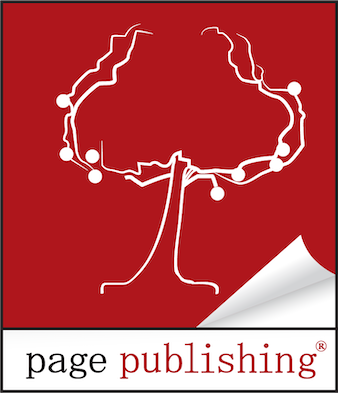
Readers today have more options than ever when it comes to how they consume books. From eBooks to audiobooks and, of course, print books, people can consume stories in different ways that fit their lifestyles and preferences. While there’s no definitive “which one is better” conclusion, there are pros and cons to both eBooks and physical books. These critical factors impact reader buying decisions. So, which one should you choose? Let’s take a look at some advantages of each.
eBook Pros
Portability
Nothing beats the convenience of eBooks when it comes to taking a book (or more) with you wherever you go. Whereas physical books are heavy and cumbersome, eBooks take up only a little space. As a result, they’re great for travel and people who read a lot of books in a short time. So load up your eReader, and you’re ready to go!
Night reading
If you’re the type who likes to read before bed but doesn’t want to keep the light on, eBooks are a great option. Most eReaders are backlit, meaning the screen is bright enough to read without an overhead light. However, artificial light has a downside (see below), which is something to consider.
Storage
Many people love the look of books on a bookshelf, but for those with limited space, eBooks are a way to collect and save books. eReaders can hold up to 500 books per gigabyte of storage—so with that Kindle you have, you could potentially store thousands of books on a single device.
Eco-Footprint
Printing physical books requires a lot of energy and natural resources. On the other hand, eBooks need none of these things, as they are all digital files (aside from the eReader itself). As a result, switching to eBooks could lower your carbon footprint and greatly reduce deforestation.
Less expensive
A big pro for many readers is that eBooks are generally less expensive than physical books. Whereas hardback books can reach up to $30, the same title eBook often taps out at $12.99 (many are much lower, including frequent promos for $0.99 or even free books). This lower pricing is because there are no printing costs associated with eBooks, allowing them to retail at a lower price point.
Features
Some eBooks have special features like bookmarks, highlighting, and even adding notes. In addition, the hyperlinked text means users can click to look up definitions of words or even visit outside sources on the internet, then quickly return to the book. All of these technological features have increased the functionality of eBooks in today’s market.
Availability
eBooks are available at the click of a button, which means you can buy and start reading a new book without leaving your home. They’re never out of stock and aren’t subject to shipping concerns. In a nutshell, eBooks are ideal for instant gratification.
eBook Cons
Connectivity
Most eReaders do not require wifi to read a book—however, you need to be connected to the internet to download a book. Therefore, if traveling, it’s best to load up your eReader before you leave so that the books are there and ready in case you find yourself in an area without wifi. Similarly, you must charge eReaders, and you run the risk of running out of battery right when you’re getting to the good part!
Artificial light
As mentioned above, eBooks are an excellent option for nighttime reading. However, the artificial light produced by many eReaders can strain your eyes and interfere with your body’s natural sleep cycle. Even with improved lighting and anti-glare technology, you might still need frequent breaks to rest your eyes.
No touch and feel
Perhaps one of the main reasons eBooks turn readers off is the lack of “touch and feel” compared to holding an actual book in your hands. Reading is very much an experience for some people, and eBooks may not align with that.
Print Book Pros
“Traditional” reading experience
Print books allow readers to touch the pages, feel the book in their hands, and smell the cover. It immerses them in the reading experience through physical substance, something eBooks can’t do.
Screen-free
For those who are wary of screen time, print books can give you a break. In today’s world, where people are on their devices all day, reading a physical book is a great change of pace, is easier on your eyes, and helps you disconnect.
You don’t have to be tech-savvy
There’s no learning curve to reading a book—simply open and start, which is good news for people who find eBooks confusing or overwhelming. No buttons to push, nothing to download.
Sharing
When you have finished a book, what do you do with it? Many people donate or pass it along to a friend. Sharing is much easier with print books and helps support the second-hand book market.
Better Illustrations
For picture books and novels with illustrations, the print version will often be of higher quality when it comes to images. Illustrations are crisper, richer, and in color, whereas some eReaders are only black & white.
Print Book Cons
More expensive
Price is one of the most significant downsides of print books. Due to printing costs (paper, production, shipping, etc.), physical books will always be higher priced than eBooks. The average price for hardcover books is $24.99–$27.99, significantly more than an eBook.
Portability and size
Physical books take up more space both during and after reading. Taking multiple books on vacation can fill up a suitcase quickly, and storing all the books you read requires space some people may not have.
Less economical
Printing physical books uses a lot of natural resources and can take a toll on the environment. An excellent way to combat this is to buy used books, borrow from the library, or consider eBooks.
The Takeaway
Reading is a personal preference, and while there are pros and cons for both physical books and eBooks, there’s no overall right or wrong choice. Weigh the advantages of each to make a choice that suits your lifestyle and needs. At the end of the day, the most important thing is that you’re enjoying a great book!
